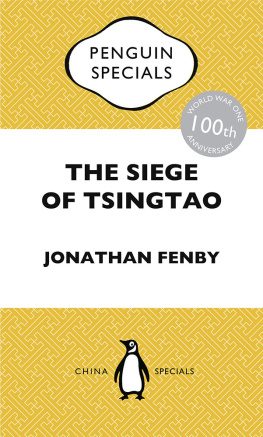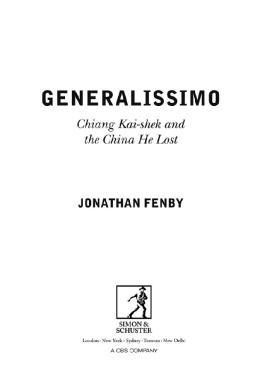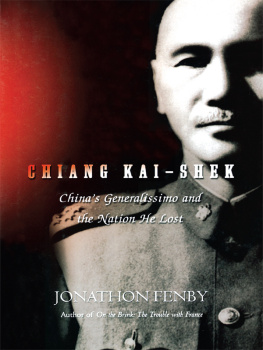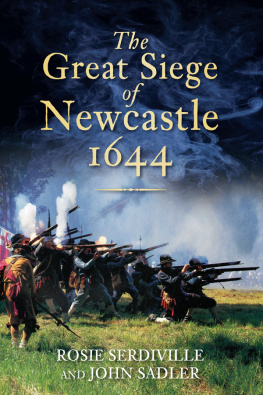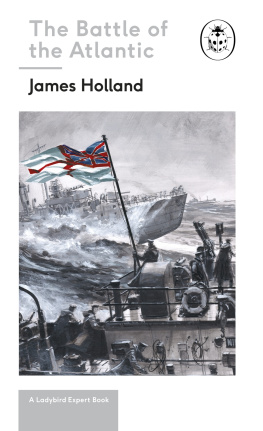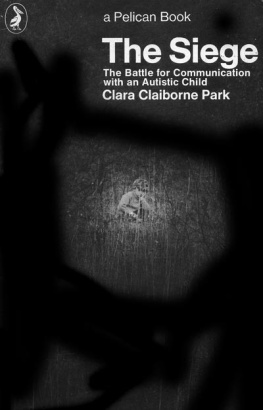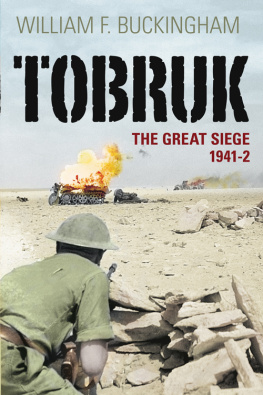Jonathan Fenby - The Siege of Tsingtao: The only battle of the First World War to be fought in East Asia: how it came about and why its aftermath is still relevant today: Penguin Specials: The only battle of the
Here you can read online Jonathan Fenby - The Siege of Tsingtao: The only battle of the First World War to be fought in East Asia: how it came about and why its aftermath is still relevant today: Penguin Specials: The only battle of the full text of the book (entire story) in english for free. Download pdf and epub, get meaning, cover and reviews about this ebook. year: 2014, publisher: Penguin Random House Australia, genre: Non-fiction. Description of the work, (preface) as well as reviews are available. Best literature library LitArk.com created for fans of good reading and offers a wide selection of genres:
Romance novel
Science fiction
Adventure
Detective
Science
History
Home and family
Prose
Art
Politics
Computer
Non-fiction
Religion
Business
Children
Humor
Choose a favorite category and find really read worthwhile books. Enjoy immersion in the world of imagination, feel the emotions of the characters or learn something new for yourself, make an fascinating discovery.
- Book:The Siege of Tsingtao: The only battle of the First World War to be fought in East Asia: how it came about and why its aftermath is still relevant today: Penguin Specials: The only battle of the
- Author:
- Publisher:Penguin Random House Australia
- Genre:
- Year:2014
- Rating:4 / 5
- Favourites:Add to favourites
- Your mark:
The Siege of Tsingtao: The only battle of the First World War to be fought in East Asia: how it came about and why its aftermath is still relevant today: Penguin Specials: The only battle of the: summary, description and annotation
We offer to read an annotation, description, summary or preface (depends on what the author of the book "The Siege of Tsingtao: The only battle of the First World War to be fought in East Asia: how it came about and why its aftermath is still relevant today: Penguin Specials: The only battle of the" wrote himself). If you haven't found the necessary information about the book — write in the comments, we will try to find it.
In 1914, Europe was not the only continent coming to terms with a new form of conflict. Through a mix of complex alliances and global ambition, the war had spread to northern China, where the German-held port of Tsingtao became a key battleground. To strike a blow at Kaiser Wilhelms naval forces, Britain and its ally Japan lay siege to the port during October and November. In The Siege of Tsingtao, the first of the Penguin China Specials on the First World War, celebrated historian Jonathan Fenby examines the causes of the battle, the ulterior motives for it, and the path it helped set East Asia on for decades to come.
Jonathan Fenby: author's other books
Who wrote The Siege of Tsingtao: The only battle of the First World War to be fought in East Asia: how it came about and why its aftermath is still relevant today: Penguin Specials: The only battle of the? Find out the surname, the name of the author of the book and a list of all author's works by series.

